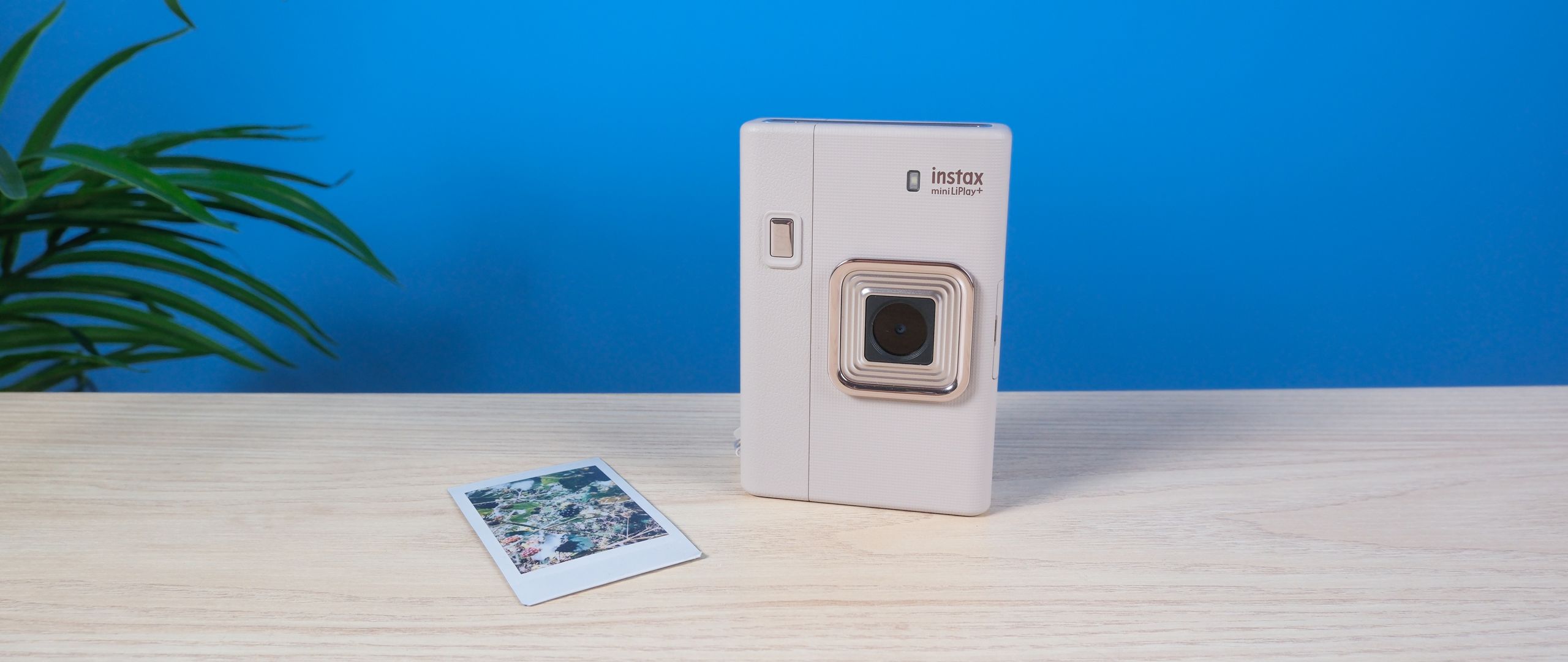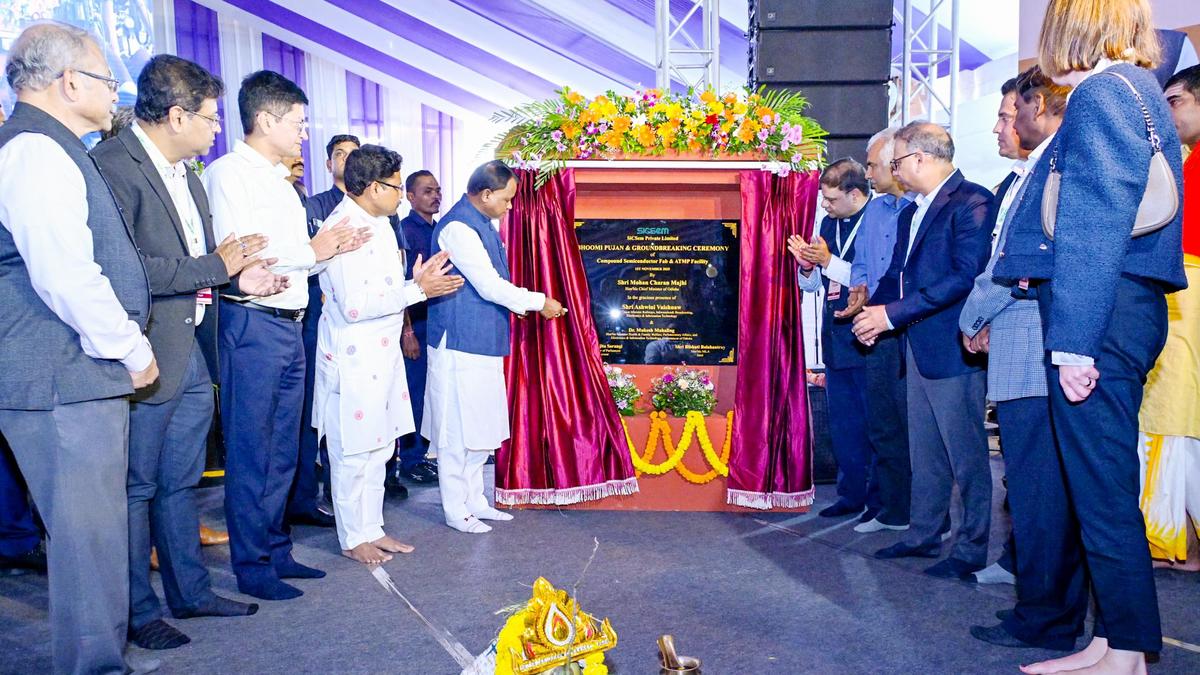Copyright tomsguide

Fujifilm makes some of the best instant cameras and it continues to set new standards for hybrid ones with the launch of the Fujifilm Instax mini LiPlay+. This instant camera succeeds its predecessor which came out over six years ago, and Fuji has introduced noticeable upgrades. The Instax mini LiPlay+ features a dual-lens system with a dedicated selfie camera so you don’t need to flip it around anymore, and it enables you to combine the selfie with an image taken with the main camera. The Instax mini LiPlay app has also been refreshed to include a sound album which lets you personalize the photos you’ve taken and clips you’ve recorded. Although it’s a little expensive and app-reliant, this is still a fantastic hybrid instant camera for those who want a camera, printer and audio recorder all in one. For the complete breakdown, read my full Fujifilm Instax mini LiPlay+ review. Fujifilm Instax mini LiPlay+ review: Cheat sheet What is it? A 3-in-1 instant camera, smartphone printer and audio recorder, and the successor to the Fujifilm Instax mini LiPlayWho is it for? Anyone who wants to take and print photos instantly but also wants to save digital copies and print directly from their smartphoneHow much does it cost? The Fujifilm Instax mini LiPlay+ retails for $234 / £189What do we like? The premium build, ease of use, dual-lens setup and selfie camera, and the array of color profiles and filtersWhat don’t we like? It’s expensive, relies on the app for audio recordings, and color profiles can’t be added after taking a photo Fujifilm Instax mini LiPlay+ review: Specs Fujifilm Instax mini LiPlay+ review: Price & availability Launched in October 2025, the Fujifilm Instax mini LiPlay+ succeeds the Instax mini LiPlay which first came out in 2019 and was refreshed in 2024 — and by that I mean that Fuji added a USB-C charging port and introduced new colors. The Instax mini LiPlay+ is available in two colors: Sand Beige and Midnight Blue. I tested the Sand Beige model which looks great, but I wish Fuji had retained the lovely Matcha Green variant as I adored it. I won’t sugarcoat the next bit. The Instax mini LiPlay+ is an expensive camera, retailing for $234 / £189. That’s nearly a hundred dollars more than its predecessor. This makes it pricier than the Fujifilm Instax mini Evo ($199), the Fujifilm Instax mini 99 ($199) and the Kodak Mini Shot 2 Retro ($159). But given that it’s a hybrid instant camera that can print images instantly, print directly from your smartphone and record audio, that price feels justified (even though it’s objectively a lot). Fujifilm Instax mini LiPlay+ review: Design & build If there’s one thing Fujifilm does well, it’s build quality — whether that’s instant or mirrorless cameras. The same goes for the Fujifilm Instax mini LiPlay+. The body is made of high-quality plastic that doesn’t feel cheap or fragile, and the camera doesn’t sound hollow if you tap it with your fingernail. The textured surface helps provide a good grip on the camera, so I was able to use it easily and confidently with one hand when needed. Its great handling is also down to its weight. The Instax mini LiPlay+, without film, weighs 9.34oz, so it’s heavier than its predecessor (7.93oz). It measures 4.86 x 3.27 x 1.49 inches, making it similar to the Instax mini LiPlay, and it feels very convenient to carry it in your jeans’ back pocket or coat’s pocket. Similar to its predecessor, the Instax mini LiPlay+’s shutter button doubles as a selfie mirror. I’m not entirely sure why, though, as the camera has a dedicated selfie lens (more on that soon). But perhaps this will help your friends or whoever you’re photographing frame themselves better, to their liking. Fujifilm Instax mini LiPlay+ review: Lens & monitor While the original Fujifilm Instax mini LiPlay featured just one lens on the front (like nearly every other instant camera I’ve tested), the LiPlay+ features two lenses. The 28mm f/2 fixed-focus lens on the front has a shooting range of 10cm to ∞, and there’s a rear-facing selfie camera above the monitor around the back. This 23mm f/2.2 lens has a shooting distance of 41cm to ∞. “Why does this lens exist?" I hear you ask. The first reason is to take selfies, of course, using the monitor (and not a selfie mirror this time), as you would on a smartphone. The second reason is that it powers the new Layered Photo Mode. What this essentially means is that you can take a photo with the front camera and then take a selfie right after, and add both to the print. It’s actually quite a nifty feature, and one I’ve enjoyed using. There are four layouts to choose from — circle, square, circle with border, square with border — and you can see examples in the gallery above. The Instax mini LiPlay+ doesn’t utilize a viewfinder for framing shots. Instead, you get a handy 3-inch TFT color LCD monitor with a resolution of approximately 920K dots — surprisingly, it’s nearly the same resolution as the monitor on the Nikon Coolpix P1100 digital camera ($1,146). I found the Instax mini LiPlay+’s screen easy to read in most lighting conditions. Fujifilm Instax mini LiPlay+ review: Controls The Fujifilm Instax mini LiPlay+ has a stripped back control scheme, unlike its predecessor which had many physical buttons. Along the right-hand edge, you’ll find the power button and a button that switches between the main and selfie cameras. The shutter button is located near the lens, within easy reach, and it gives good tactile feedback when pressed. All other controls are located next to the rear monitor, and these include the navigation wheel, media playback, mode and print functions. They’re all self-explanatory and I found them extremely easy to use. Commands are registered almost instantly, and I’m sure that even if this is your first hybrid instant camera, you’ll have no problem getting to grips with it. Fujifilm Instax mini LiPlay+ review: Image & print quality The Fujifilm Instax mini LiPlay+ is a fun little camera that takes lovely photos. At just 4.9MP, you shouldn’t expect smartphone quality from the camera, and the Instax mini LiPlay+ is all about having fun and creating memories in the form of physical prints that you can keep for years to come. The camera adjusts shutter speed and aperture automatically, so all you need to do is point and shoot. I took photos in and around Bath, U.K. to test the Instax mini LiPlay+, and I’m pleased with the shots I got. Shooting with an instant camera involves trial and error but that’s what’s exciting about it. The photos in this review are digital scans downloaded via the Instax mini LiPlay smartphone app. There is a limitation though. You can only save digital copies of the photos you’ve printed out — same as on the Fujifilm Instax mini Evo. There’s a good reason for this: it’s so that you don’t use the camera like a smartphone and keep taking photos without thinking. Film costs money, and Fuji wants to maintain the essence of analog photography even with its hybrid instant cameras, so you should think before you shoot. It’s what Fuji’s trying to do with its new mirrorless and digital cameras too, such as the Fujifilm X-E5 and the Fujifilm X half. Controls are stripped back and limitations are posed to prioritize the shooting experience, such as the display modes on the X-E5. But of course, the cynic in me thinks it’s because Fuji also wants you to spend more money on film. Two things can be true at the same time. Like the Instax mini LiPlay, the Instax mini LiPlay+ has a selection of filters and frames you can apply before printing your photos. You can see a few examples above. These frames and filters can help you get creative and add another fun element to your instant photography. My favorite filter is the fisheye effect. It’s really silly, goofy and whimsical, and we had a lot of fun playing around with it in the office. In the first photo in the gallery above, my coworker and TechRadar’s Harry Padoan looks like a caveman discovering a camera for the first time. As this is an instant camera and it doesn’t feature the best autofocus technology, focusing can be hit or miss. In the first slide above, the flower is in focus and looks detailed. The second photo of the berry is out of focus, in contrast, and the print is unusable. The Instax mini LiPlay+ can store up to 45 images in its internal memory. I found this limiting and if you do too, you can insert a microSD card to extend it. This is also true in the case of the Instax mini Evo. Overall, I’m pleased with the shots I got. Instant cameras are less about perfect photography and more about printing keepsakes, and at that, the Instax mini LiPlay+ excels. Fujifilm Instax mini LiPlay+ review: Sound quality What differentiates the Fujifilm Instax mini LiPlay+ from its hybrid sibling, the Fujifilm Instax mini Evo? While both cameras can print directly from your smartphone, the Instax mini LiPlay+ can also record short 3-second audio clips and print them onto your photo in the form of a QR code, as you can see above. The Instax mini LiPlay+’s mic is good and the audio it records sounds clear. It picks up environmental sounds well, such as those of birds chirping and ducks quacking, so it’s handy to add context clues to the photo you’ve taken. But the Instax mini LiPlay+’s audio feature relies on the Instax mini LiPlay app, so you’ll need to download it on either iOS or Android. You’ll then need to upload the audio file to the cloud which takes under a minute to do. The QR code will then be scannable and you’ll be able to listen to the clip. It’s a long-winded process but it’s nice to have. You can also use the app to add Fuji’s stock music clips. Fujifilm Instax mini LiPlay+ review: Film cost The Fujifilm Instax mini LiPlay+, just like other cameras in Fuji’s mini lineup, uses mini format film. A double pack of film (20 prints) generally costs $16 / £14 so it’s quite affordable. This means you’ll be paying approximately 75¢ per print. Instax mini film is also cheaper than Polaroid Go film used by cameras like the Polaroid Go Gen 2 ($79), 16 pieces of which usually cost $19 / £18. Fujifilm Instax mini LiPlay+ review: Battery life One thing I love about the Fujifilm Instax mini LiPlay+ is that it’s fitted with a rechargeable Lithium-ion battery, so you don’t need to worry about the environmental impact of disposable ones. You’ll find disposable batteries on instant cameras like the Fujifilm Instax mini 41 ($99). Fujifilm says that the Instax mini LiPlay+ is able to capture and print approximately 100 shots between charges, which is similar to the Fujifilm Instax mini Evo. A battery indicator on the LCD monitor indicates the charge level although it doesn’t specify exactly how many shots are left. I got through three packs of film — so 30 prints — and still had two bars of battery left. Fujifilm Instax mini LiPlay+ review: Verdict If it’s a hybrid instant camera you’re after, they don’t get better than the Fujifilm Instax mini LiPlay+. A 3-in-1 device that’s a camera, smartphone printer and audio recorder all in one, it’s great for fans of instant photography. It’s extremely easy and fun to use, and it’s built very well too. The dual-lens setup with the selfie camera is a lovely addition over the original, as is the Layered Photo Mode. Photos and prints turn out bright and detailed, even though they’re just 4.9MP. Sound quality is good, although the camera relies heavily on its companion app to use this feature. Also, you can’t add color profiles to photos after you’ve taken them, which is a slight limitation. Overall, though, I’ve loved using the Instax mini LiPlay+. It’s fun and cute, and it combines the best of analog and digital instant photography.



